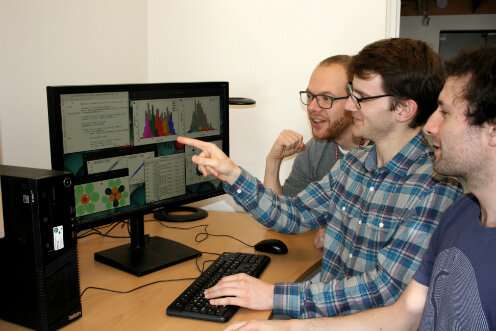Discovering the next generation of catalysts

The use of solar and wind energy must be doubled to meet the world's demand for clean energy over the next 30 years. Catalysts that can ensure the storage of solar and wind energy in fuels and chemicals will therefore play an increasingly important role. The catalysts used today are, however, often expensive and ineffective. Now, researchers at the University of Copenhagen and DTU have developed a method that makes it easier to find better and cheaper catalysts. Their results are published in the journal Joule.
The world's energy needs will increase two to three times over the next 30 years as the world's population rises from approx. 7.3 billion today to approx. 9.7 billion by 2050, according to UN figures.
It is not enough to expand the capacity of solar and wind energy as a substitute for fossil fuels. Both sources satisfy the need for environmental sustainability, but they are unstable due to their reliance on unpredictable weather conditions. A result of this instability is that catalysts and electrolysis have become increasingly important to ensure a stable energy supply. In addition, catalysts are used for many things in the chemical industry, including the conversion of harmful exhaust gases from cars and the conversion of nitrogen from the atmosphere for fertilizers.
Still a long way to go
"There is still a long way to go in the development of catalysts that can be used for e.g., fuel cells, storage of solar and wind energy and new, environmentally friendly fuels. The catalysts that exist today are not good enough to ensure a green transition," Professor Jan Rossmeisl at the Department of Chemistry for the University of Copenhagen, points out.
With the aid of two Ph.D. students, Jack K. Pedersen and Thomas A.A. Batchelor, he is looking for "the famous needle in the haystack" among a new generation of catalysts. But this is no easy task.
"It is difficult to find the right alloy of metals for catalysts among infinitely many possibilities—despite today's supercomputers. Finding the best alloys would take a lifetime. We use the so-called high-entropy alloys, which are random mixtures of many elements, as a starting point, and we have developed computer models based on machine learning. In this way, it becomes easier to sort the myriad of combinations of alloys and find those that can solve the problem of converting and storing solar and wind energy efficiently," Professor Jan Rossmeisl says.
More information: Thomas A.A. Batchelor et al, High-Entropy Alloys as a Discovery Platform for Electrocatalysis, Joule (2019). DOI: 10.1016/j.joule.2018.12.015
Journal information: Joule
Provided by University of Copenhagen



















